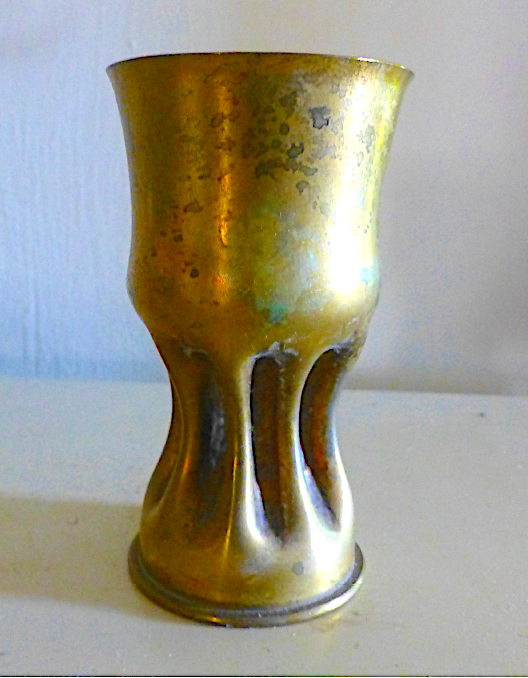40 mm Shell Casing Vases
Wartime souvenirs from Sally Nelson’s father, these two small vases have nothing to do with Southeast Asia, but are further examples of the art of humble objects and very representative of the Nelsons’ (and particularly Sally’s) approach to collecting—everyday materials shaped for use in simple, elegant, arresting forms. Etched and molded shell casings are among the most popular form of World War I “trench art,” or decorative objects produced by soldiers waiting endlessly in the notorious trenches of the Western Front. Though trench art more generically had been known for centuries, by World War I soldiers and prisoners on both sides of the conflict were engraving and carving everything from spent shell casings to soup bones, transforming them into personal mementos and useful historical records of the war to end all wars. Some pieces are particular to certain battle zones, but nearly all employ the waste and excess tools of warfare that were the most readily available materials. These matched vessels are made of brass 37mm shell casings produced in September 1917 by the firm of Pinchart Denis, Paris for use by Hotchkiss light cavalry and naval revolving one- pounder cannons.
Those soldiers who did not have the time or tools to engrave spent artillery shells in the trenches often brought them home, where they would be embossed, fluted, and flared. Engravings on canteens and mess kits were generally done in the field, as were paintings on helmets. As these casings are the smaller, lighter 37mm size which could be easily carried in the pocket, of simple design, and flexible enough to be worked without special tools (unlike the enormous torpedo and 210mm artillery shells), it is possible that Sally’s father shaped them in the trenches rather than having them worked upon his return, as postwar professionally made pieces tend to be much more ornate and heavily worked.
Gift to Sally Nelson from her father
Brass; 8.5 x 4cm.
Nelson South East Asia Collection © 2025

